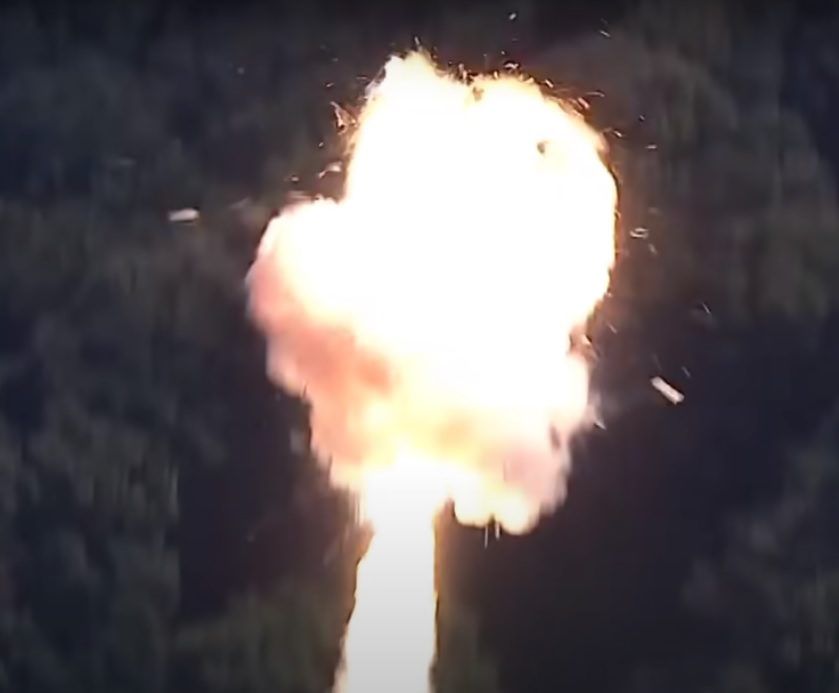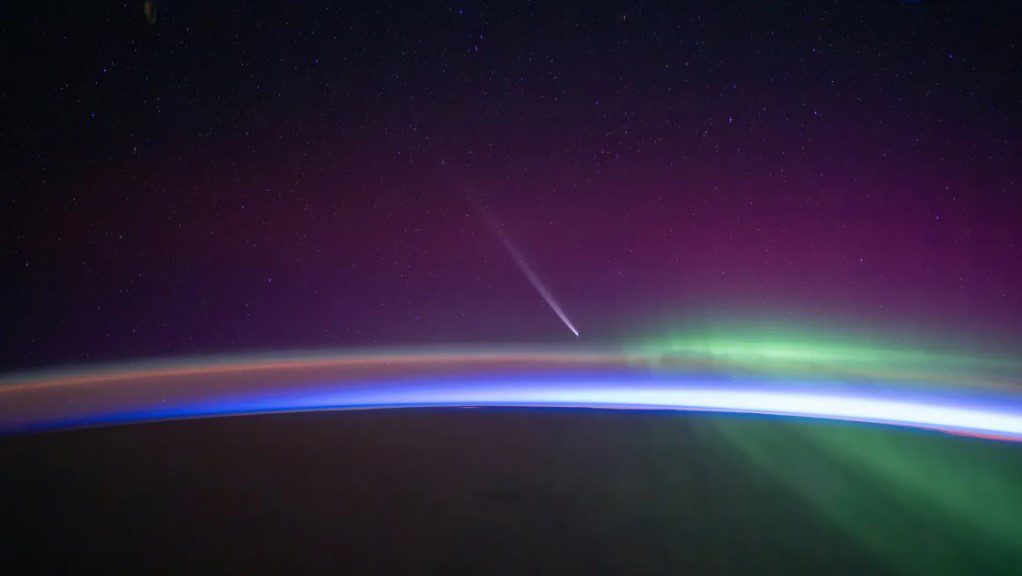Space Cadets have very little time left to see the ‘Cosmonaut – Birth of the Space Age’ exhibition at London’s Science Museum. The exhibition, displaying some important spacecraft and artefacts from the early years of the Soviet space programme, is set to close on 13 March 2016. While the Science Museum is free, the exhibition itself costs £14 to enter for adults. Despite this relatively high price, it has proven to be very popular.
Cramped misery is the order of the day
It starts with a display of the works and ideas of the father of rocket science and astronautics, Konstantin Tsiolovsky, whose ideal rocket equation still holds true. The narrative soon moves beyond the dreams to S. P. Korolev, the engineering genius who actually made spaceflight a reality. This was first achieved with the launch and orbiting of the first artificial satellite, Sputnik 1, in 1957. It usurped the Dalek-shaped Sputnik 3 science mission, which lost its place to the simpleton radio-bleeping Sputnik 1 just to make sure this first orbital spaceflight worked out. Of course, in between came the dog-carrying Sputnik 2, with scale models to show what the poor mutt Laika had to suffer. Sadly, she only lasted a few hours in orbit before dying from thermal exhaustion – perhaps it was just as well as there was no way back for her.
Animal welfare concerns aside, it is human spaceflight from the Cold War space race days that this exhibition is really all about. It shows us the surprisingly spacious Vostok space capsule, which the diminutive Yuri Gagarin and his cosmonaut colleagues flew from 1961 to 1963. The Vostok 6 capsule example on show is the mount of Valentina Tereshkova – the first woman in orbit, and one who might still be there had an emergency reprogramming of the firing direction of its engine not been accomplished during her mission in 1963. Tereshkova was recruited as an expert parachutist – a useful talent given that early cosmonauts had to eject from their re-entered Vostok spacecraft on their way back to Earth.
Modern space technology does get a look-in, including a three-man Soyuz landing capsule and the Russian Orlan space suits used to make modern-day spacewalks, but this show focuses on the early “space race”. What it does well, as is evident from the posters and other artefacts on display in addition to the engineering models, is to describe how the early Soviet space effort influenced both the mood and the art of the nation.
While the first room of the exhibition is disastrously cramped on a busy day (this writer went on a Saturday), with visitors having to queue for several minutes to see each item, perhaps this was apt. It was, of course, cramped misery that the Cosmonauts had to put up with – especially in the Voskhod missions. While the hollowed-out, ball-shaped spaceship, Vostok, was quite roomy for a single space traveller, the communist state soon had other plans in order to stay one step ahead of the Americans and their two-man Gemini spacecraft. The Russians did this by shoe-horning two extra seats into the Vostok, so that three crew could be carried, but with no room for spacesuits. Korolev renamed this 1964 mission Voskhod 1 and its capsule is on show to enable comparison with Tereshkova’s Vostok 6. Russia subsequently used a two-man version for Voskhod 2 in 1965, this time with spacesuits. An inflatable air lock allowed Alexei Leonov to perform the first ever, and nearly disastrous, spacewalk (he had to make an emergency deflation of his suit to get back inside).
These real spacecraft are well displayed in the “more roomy” halls, but views of the interiors, including the very basic globe position tracker and specially designed portholes, are inaccessible other than by using mirrors mounted on poles. It might have been better to set up a viewing gallery above the access hatches with some steps or a ramp up, reserving the mirrors for the exhibits that really needed them.
Perhaps most irritating of all is the final room. Having squashed us all earlier, this nearly empty blue painted room, with its single Zond mission instrumented dummy cosmonaut, is both breath taking and annoying, given its apparent waste of space (excuse the pun). And while it is supposed to enthuse visitors into supporting further space exploration, it mainly hints at what the belated Soviet preoccupation was in the mid-1960s: beating America to the Moon.
No comparison with NASA but the LK module has its own beauty
There are other faults in the exhibition. While the Science Museum does have a genuine Command module from Apollo 10 downstairs, along with a 90% scale model of the NASA lunar lander, true space cadets would have liked more detail on the differences between the Soviet moon landing plan and the NASA Apollo one. For example, the Smithsonian in Washington has a display of scale models of the Soviet Union’s unreliable, but very powerful, N-1 moon rocket next to the USA’s venerable Saturn V. Understandable, you might say, given that this show was about cosmonauts and not astronauts, except that it would have been fascinating to see the key features of what Alexei Leonov, the first Soviet spacewalker and prospective first lunar landing astronaut, would have faced on his lunar mission.
For example, his LK landing craft (on display) had no docking tunnel, and he would have had to make a hazardous spacewalk down the side of his carrier rocket to get into it to make a landing. Likewise, while Apollo’s larger and more sophisticated “Lunar Excursion Module” lander had two crew and two engines (one for landing and one for ascent), Leonov’s crude LK lander could carry only one cosmonaut, while its single engine had to be used both for the landing and the lift off (albeit leaving its landing legs behind).
Quibbling over an exciting and enlightening exhibition
Perhaps this writer is just quibbling over what is an exciting and enlightening exhibition. For instance, it includes a Lunakhod unmanned lunar rover, which has gained recent infamy because the Polonium 210 isotope used in the its heating system has also been used as a nuclear poison. This is perhaps indicative of just how difficult it was for the Science Museum to skirt around the sanctions imposed on Russia’s Putin-led government, given its connection to assassinations, annexations and bombing campaigns. In fact, it is a tribute to guile, diplomacy and willingness to cooperate by all sides, including the show’s sponsors, BP, and most importantly, the artefacts’ Russian lenders – mainly state museums – that this very good exhibition ever happened. At one stage, for example, the space exhibits even changed ownership on a temporary basis to bypass the sanctions and avoid confiscation over court fines owed by the Russian government over chicanery to do with Yukos Oil.
Finally, tribute must be paid to the star of the show: the spider-like LK lunar lander which rightly takes pride of place even though its faulty N-1 carrier rocket never let it fly to the Moon. However, it was successfully test flown in low Earth orbit four times, albeit without cosmonauts inside.
And while we remain grateful for Neil Armstrong’s coolness under fire during his and Buzz Aldrin’s successful Apollo 11 lunar landing in 1969, just a bit of us would have liked Leonov to have used this bizarre contraption to land there as well. Let;s face it, if things had worked out differently, Leonov might have used one to get to the Moon first – perhaps in 1968.
Seradata rating: Good as this exhibition is, we can only give it 7/10 due to some staging mistakes. Nevertheless, we heartily recommend going to see the LK lunar lander while you still can (but best avoid a busy weekend).
Post script: Officially no photography is allowed in this exhibition although in reality it is flash photography that the museum most wants to prevent as this damages artwork and documents.



